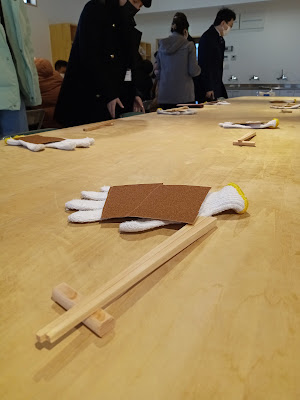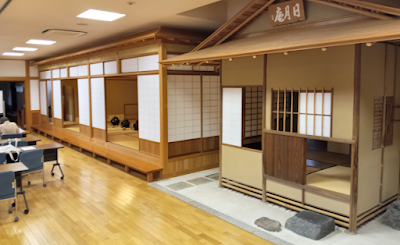 |
| arriving at Kogakkan University for opening ceremony, orientation, lecture |
Part of the program, now in the 9th iteration - begun in spring 2014 and with Covid hiatus in 2020 & 2021, is for scholars young and old to get started in the many-faceted world of Japan through the lens of Shinto thought, practices, places and heritage. And another part is to rely on participants to interpret their weeks of study and field trips for others to learn, too. Thanks to the increasing place of social media in personal and professional communication and imagination, everyone will be posting on platforms of their choice, incrementally forming a larger picture of the subject for others to see, hear, or read.
Covid is subsiding in a relative sense and so travel is getting easier. People will be able to gather from many places without dread of virus transmission. But that time has not fully arrived yet, so February 20 all participants supplied saliva samples for same-day processing in the PCR.LAMP test regimen. By the end of the day all were confirmed virus-free, so today (Tuesday the 21st) all 13 boarded the bus at Yokkaichi for the 90 or so minutes to Ise to being lectures and field trips in earnest.
This video clip is after the campus tour and lunch. We were guided by Pr. S, who led us to the newest shrine added to the 120 shrines already present within the bailiwick of
Ise Jingu. It is the 100-year-old Yamato-Hime Jinja. We learned to bow before proceeding to the grounds where one pays respects, passes under the torii, and proceeds along the route and up these dappled steps to reach the point of rinsing hands (impure for any filth touched along the way here) and mouth (impure for any bad words spoken) in a prescribed manner. Once assembled at the worship space at the building, the standard form of two deep bows (palms of hands touching below the knee to put one's back at about 90 degrees from the upright position) and then two hand claps (palms together at first, then back up the right hand about 10 or 15 cm before making the wide swing to clap. Finally, one last bow. Afterwards, our coordinator, Ms. U, brought us to the Jingu's art museum to see the special exhibition hosted this spring. We finished by checking in to the hotel near the Ise rail station and learning how the supper vouchers and the bus prepaid cards work for tomorrow's ride to campus.
One reflection from lunch conversation: the majority of today's 3,000 Kogakkan students major in liberal arts, rather than Shinto seminary studies, and this is a mirror of the society, too, since the average person in Japan knows a little, but not in depth or breadth of the many parts and meanings of Shinto traditions. But this brings up the idea that head knowledge about a subject like Shinto may differ in various ways from heart (operational, lived) knowledge of Shinto. Awareness, appetite for, and interest in powers in the land, sea and sky, including one's own place in the scheme of things can take many forms. Some will be motivated to build up their reading knowledge or touring knowledge of Shinto sites. But others will be motivated to engage in patterns of worship and expanding their ability to notice forces at play (at work?) in the surroundings of city or countryside or wilderness. During these three weeks, we will be able to get a bit of both kinds of knowing: what is lived out by experience, but also what can be taught in publications and conversations.




Comments
Post a Comment